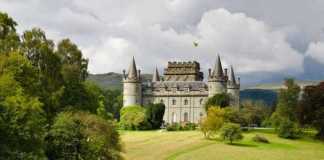A realm of snow-covered grasslands, yurts, ice castles and Russian dolls, Inner Mongolia is a Chinese region with Mongolian heart and Russian soul. Mongolia in winter is like being in a dream.
As dawn breaks, the city of Manzhouli becomes a distant dot in the rear vision mirror of our minibus. We drive along the icy 301 national freeway as the shimmering golden sky morphs into a blanket of purple-pink.
Inner Mongolia doesn’t have the skyscrapers, huge monuments or China landmarks most visitors might want to see. Even so, of all the places to visit in China, this would have to be one of the most memorable for me.
Contents
Inner Mongolia in winter
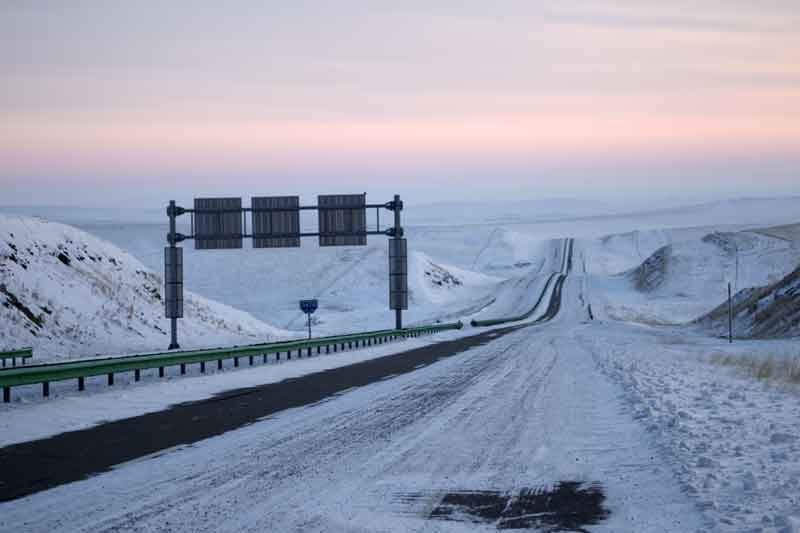
We’re rolling through the ethereal wintery landscape of the Hulunbuir grasslands.
The countryside is a white blanket with spindly strands of straw-coloured grass thrusting through the snowy ground and puckled mounds of snow ringed in blue shadows.
Herds of cattle shiver in the snowy plains and distant windmills are silent sentinels in the otherworldly countryside.
I’ve visited many places in winter, however, Inner Mongolia in winter is far more otherworldly than say winter in Japan or winter in Tasmania or even winter in Canada.
We pass snug houses with snow-covered rooftops, smoke billowing from tall chimneys and small towns with fluttering Mongolian, Russian and Chinese flags.
Our Mongolian driver has a laughing Buddha charm attached to a spring on the dashboard of the minibus and a wooden wolf’s tooth dangling from the rear vision mirror.
Both are totems to keep us safe on the journey.
He recites poetry and Mongolian quotes about travelling to faraway lands.
On the freeway in Inner Mongolia
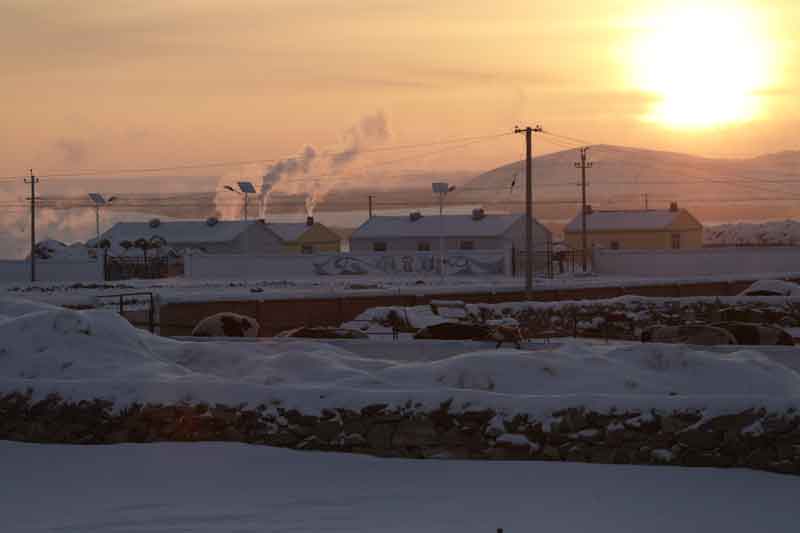
Along the freeway, there are fenced plots of government-owned land, allocated to herders who farm sheep and cattle.
Extreme weather conditions make life difficult for farmers in winter and livestock is valuable.
A milking cow is worth between 10,000 to 20,000 RMB ($1500 to $3000).
The temperature is -26C but it’s an average day for the inhabitants of Inner Mongolia.
The only place I’ve been to as cold as this is the Yukon in Canada at the start of the Yukon Quest dog race.
It’s a different picture in summer, however, when the plains are a blanket of green and the region’s main activity is horse riding.
I scrape the ice off my window with a credit card as we roll through Hailar, the administrative capital of the Hulunbuir region, a region of 250,000 sq km and has a population of 2.7 million people.
Once part of Manchuria, Hulunbuir was annexed to Manchukuo in 1932, when the Japanese supported the last Qing Emperor, Pu Yi, as head of state.
In the streets of Hailar, workers shovel snow beneath pine trees and men in bicycles navigate the slippery streets, weaving among late-model cars.
Most of the architecture has Mongolian influences, with rounded domes and yurt-shaped temples.
Where is Inner Mongolia?
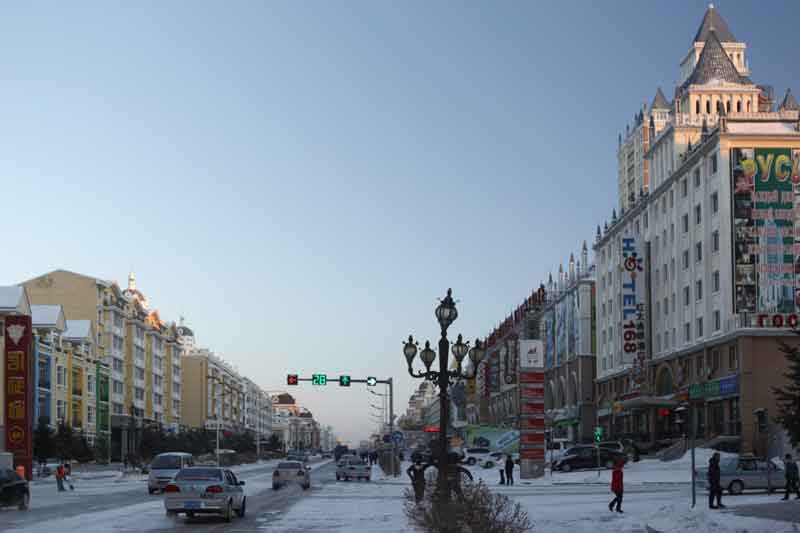
Although Inner Mongolia is part of China and around 80 per cent of the region’s inhabitants are Chinese, the region’s Mongolian heart continues to beat strong long after Genghis Khan united the Mongol tribes during the 12th century.
Genghis Khan once said: “Conquering the world on horseback is easy; it is dismounting and governing that is hard.”
The medieval Mongolians were fierce warriors and some Mongolian traditions were downright cruel.
For instance, one of the traditional Mongolian methods of killing a sheep is to slit its chest and rip its heart out.
Looking for more destinations in China? You might also like:
- 20 Things To Do In Guangzhou
- 20 Places To Visit In Macau
- Things To Do In Xian
- Things To Do In Xiamen
Mongolian Yurt
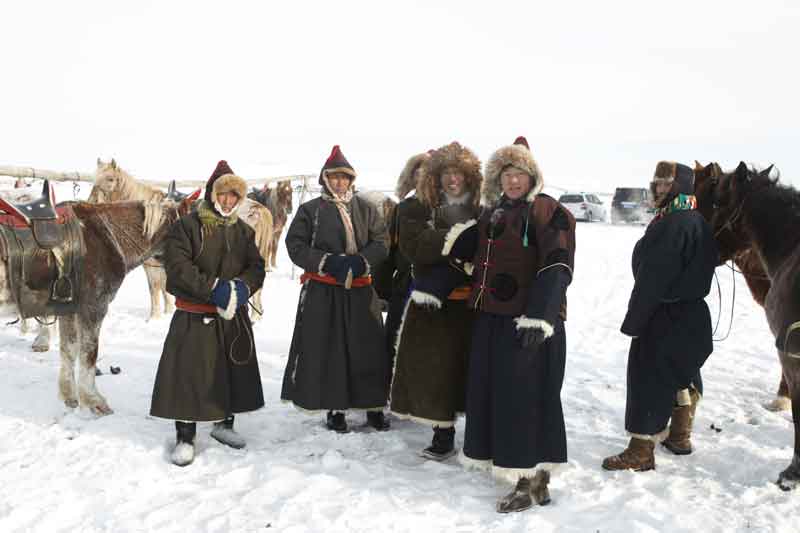
We visit a traditional Mongolian yurt, which is a round tent-like structure with a marquee roof made from wool in winter and canvas to keep cool in summer.
Besides Mongolians, the region is also home to two more of China’s 52 ethnic groups, the Ewenke and Taur people.
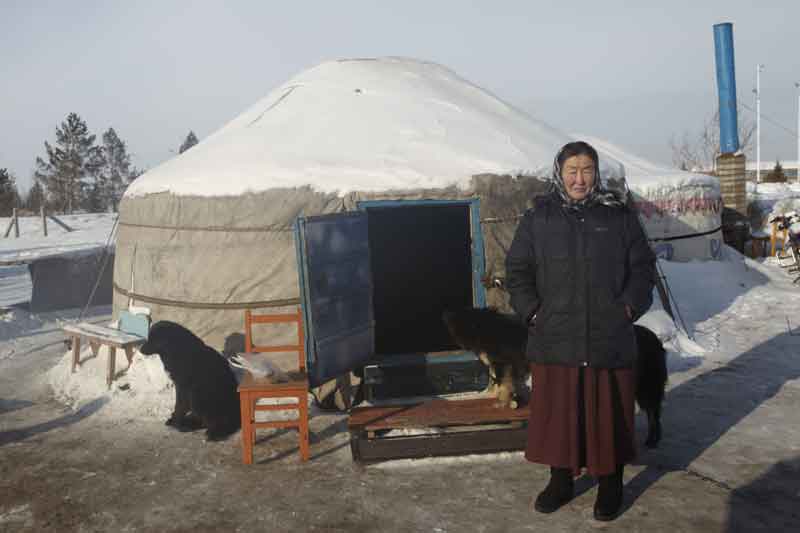
In the Ewenke Folk Museum, in Bayantuohai in the Ewenke Autonomous Banner (District), I discover the history and culture of the Ewenke, a fast-disappearing tribe of traditional reindeer herders with less than 300 people left.
The dress, tools, living structures and sleds used by the Ewenke bear a resemblance to that of the Sami in Lapland.
Manzhouli
Back in Manzhouli, from my base is the Shangri-La Hotel, which is the only international five-star hotel in town, the view across the frozen Hulun Lake stretches towards the city’s new building developments and the white countryside around it.
My hotel has all the amenities you would expect in a five-star hotel including a health club, heated indoor swimming pool and restaurants serving Russian, Mongolian and Chinese cuisine.
Rooms come with accessories designed for the extreme temperatures, such as a humidifier, which sits on my bedside table to put moisture back into the dry air (in winter, the humidity level is around 13%).
It’s a comfortable base to escape from the cold and surprisingly inexpensive.
In winter, which is low season, you get a room for around $US100.
Watch my video to see what the hotel is like:
Russian influence
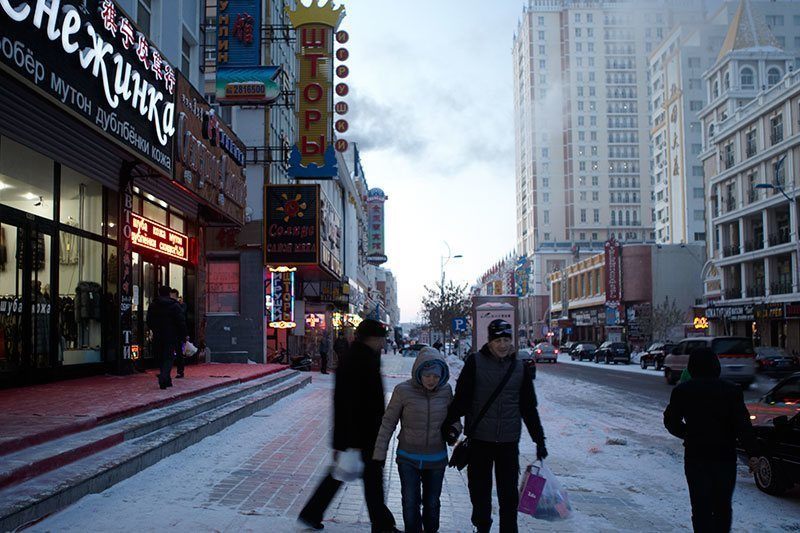
The Russian influence in Manzhouli is everywhere you look. Street signs are in Chinese and Russian, and sometimes Mongolian as well.
Chinese shopkeepers speak fluent Russian to cater to the Russian traders and domestic shoppers who drive across the border with vans packed with everything from white goods to food.
Before the global financial crises, Manzhouli’s economy was booming with Russian traders and coal mining activities.
As there is no official exchange rate between the rouble and the yuan, an unfavourable exchange rate between the rouble and the US dollar has caused a decline in trade with Russia.
But there’s a positive feeling among local business people that Manzhouli’s future is bright as Manzhouli is on the list for approval to become one of China’s Special Economic Zones, which would mean that trade could skyrocket.
Matryoshka Square
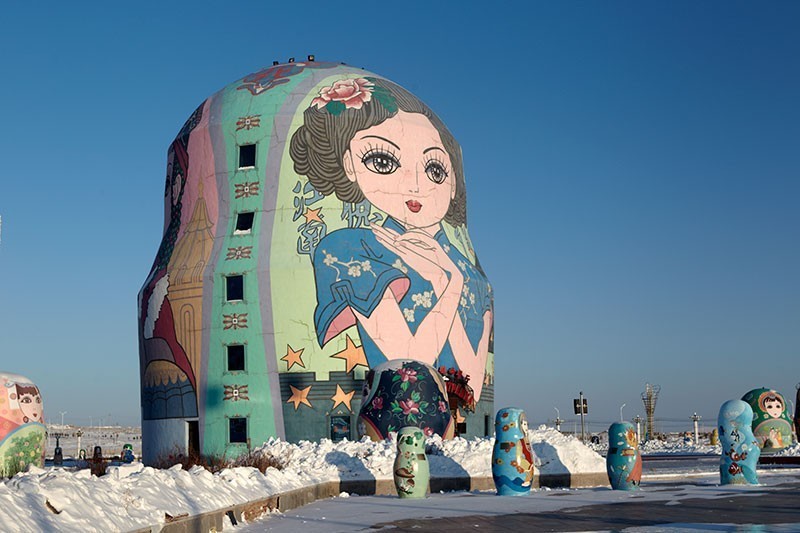
A popular souvenir in Manzhouli is the Russian matryoshka nesting doll, which the city’s fairytale-like Matryoshka Square is named after.
In the centre of the square is a 30-meter tall matryoshka doll surrounded by hundreds of smaller statues and smaller brightly painted dolls.
A sky blue Russian-style building with dreamy onion domes completes the picture-book scene.
Most of the buildings in Manzhouli were built around five years ago by developers anticipating a boom.
The grandeur of the Russian architecture and the city’s desert surroundings makes it feel like Las Vegas’s early days or Dubai before its construction boom.
Manzhouli Ice and Snow Festival
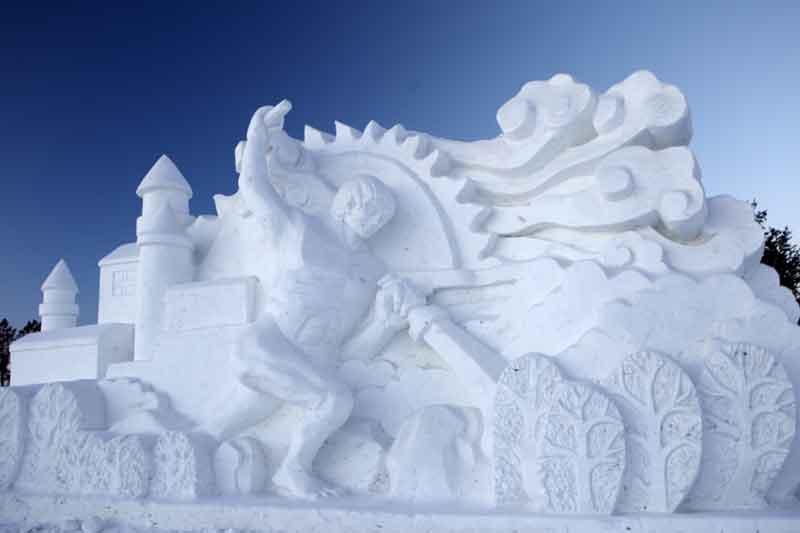
Winter is a wonderful time to visit, especially when the Manzhouli Ice and Snow Festival is in full swing (from late December to the end of February).
Giant blocks of ice carved in shapes of animals, castles, buildings and picture panels are an impressive sight.
It’s below freezing but there are plenty of places to warm up.
Huddled in a yurt-like tent at Jing Zhang Han Mongolian restaurant, I drink Mongolian tea, which is a concoction of beef jerky, Mongolian dry cheese, milk and sago, and dine on Mongolian lamb, while the haunting music from a horse-hair fiddler and a Mongolian throat singer uplifts my soul.
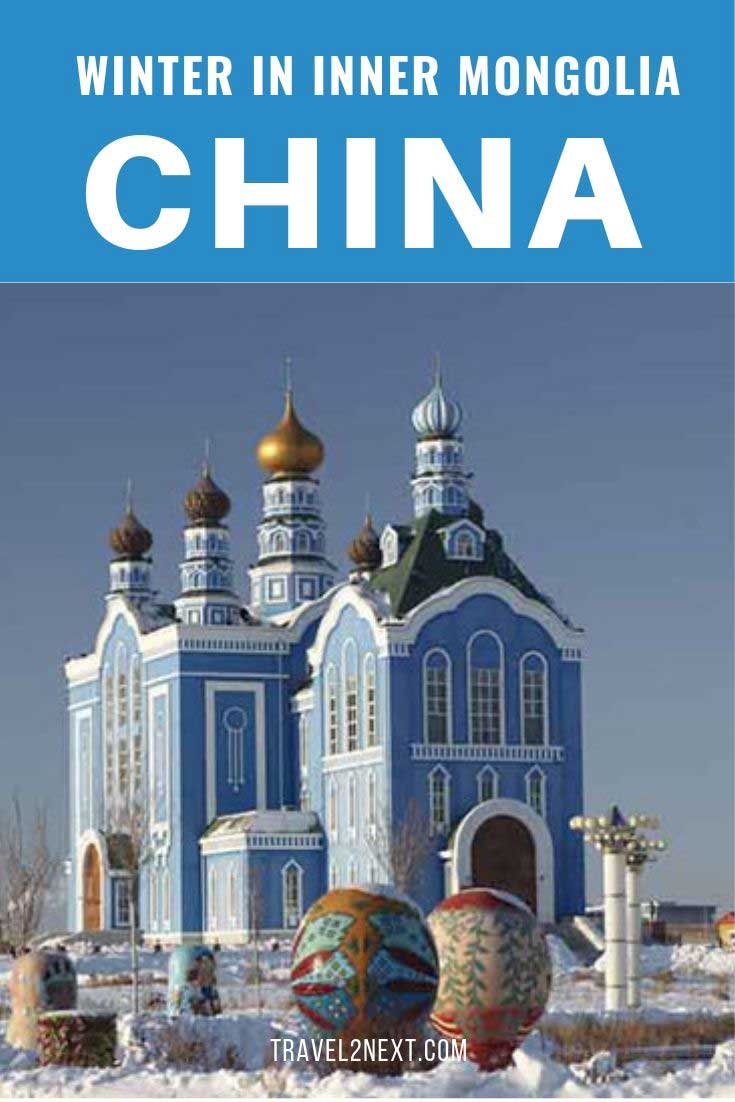
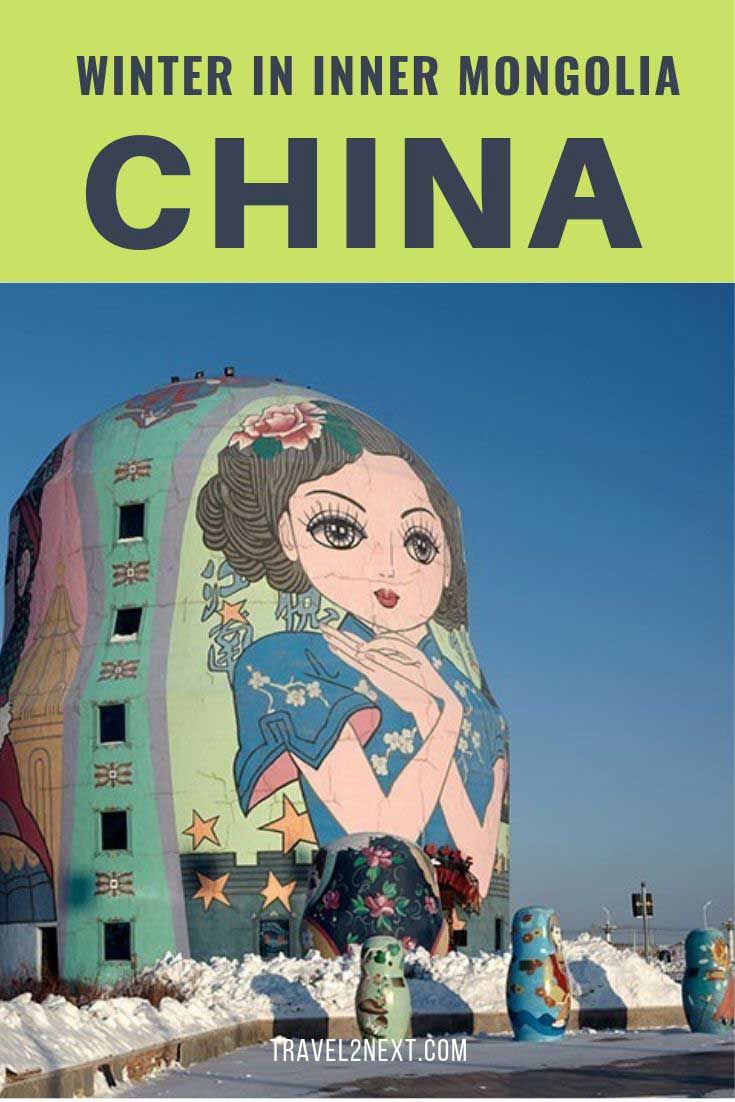
Plan Your Trip

Rent A Car – Find the best car rental rates at Discover Cars. They compare car hire companies to provide you with the best deal right now.

Find A Hotel – If you’re curious about this article and are looking for somewhere to stay, take a look at these amazing hotels.
